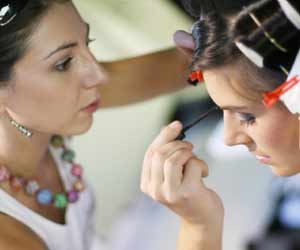The Film Industry
We all remember the first movie we saw and how that feeling of awe came over us when it began playing on the big white screen. What’s more is as we got older and became more aware of what film actually is, we all became more intrigued. In the world of film, there are actors and directors and producers and artists and everyone in between. Every set job plays a pivotal role in the “final cut.”

It is safe to say that film in all arenas plays an important role in our lives. It’s exciting and telling and truthful and completely intriguing. Since the beginning, film was created as a medium of expression. It could say things that maybe we weren’t able to or imagine places that didn’t exist or explore dreams and make them possible. In essence, film has been at the forefront of both social progress and technology. But on a much simpler scale, film has created a limitless world of beauties, monsters, and worlds outside of reality. In order to create such an incredible world of characters and reality and fantasy and imagination, every piece of the puzzle has to fit.
There are a team of people that make it possible to get a film produced and printed and up on a screen for the world to see: Directors, Producers, Gaffers, Editors, Set Designers, Writers, Casting, Wardrobe, and Hair and Makeup. That is only a portion of the film crew. There are Teamsters, Craft Services, Production Assistants (quite possibly the hardest working people on set and the least paid), A Music Department, Art Department, Special Effects, and on and on. In order to work in this world of magic and wonder and creative flow, you should have a pretty good understanding of film. In order to get that makeup training, there are a lot of factors to consider.
What exactly do you want to do in film? Direct? Write? Produce? Design? Blow stuff up (ok, Special Effects)? Make people beautiful or grotesque and everything in between (Makeup Artists/Hairstylists)? Create amazing costumes (Wardrobe)? Feed the hard working crew on set (Craft services)? Light the stage (Gaffers)? Get the shot (Cinematographers)? Change the screenplay when an actor or director decides another line or another scene works better and the screenplay is re-worked and re-written (Script Supervisor)? Piece the finished product together (Editor)? On the surface it may seem pretty clear cut but it’s actually a very intricate world that requires talent and tact, willingness to adapt, and a continual strive towards innovation.
Every department from Pre-Production to Post-Production has a very clear role in what we end up seeing on screen. While to the average viewer, it entices and enlivens, makes you laugh or takes you far away, film is incredibly complex and finding your niche is crucial to your longevity in this business. The one really amazing aspect of working on set with a crew of talented individuals is for a week to three months, you become quite close with this family of artists. Granted not every job lasts for weeks or months, some shorts can be shot in 3 days or an ad campaign can be shot in a single day but then there are epic films that, unlike most, shoot sequentially for up to a year. That’s not always the case but it is a very creative and yet demanding schedule. Preparing for long days and the creative vision of a group of people requires patience, understanding, and as mentioned above, a clear willingness to adapt.
So, now that we’ve covered the overall scope of things, let’s get specific. Let’s talk about the skill set required to create the monsters and beauties and the incredible amount of work that goes into creating what an audience sees.

